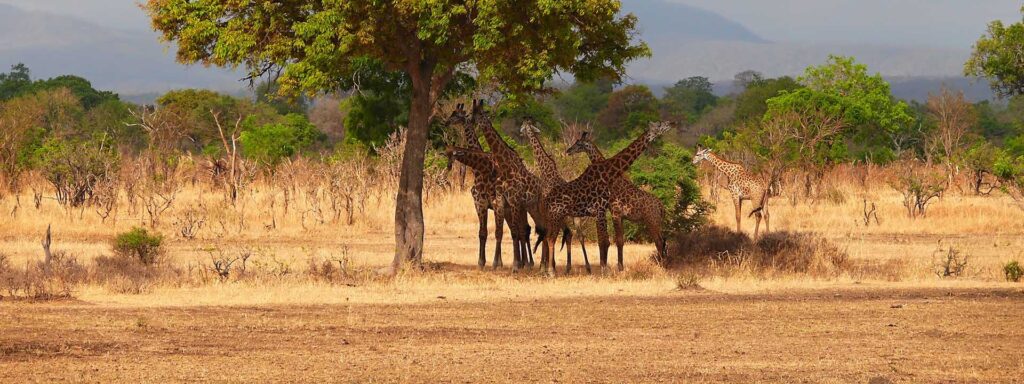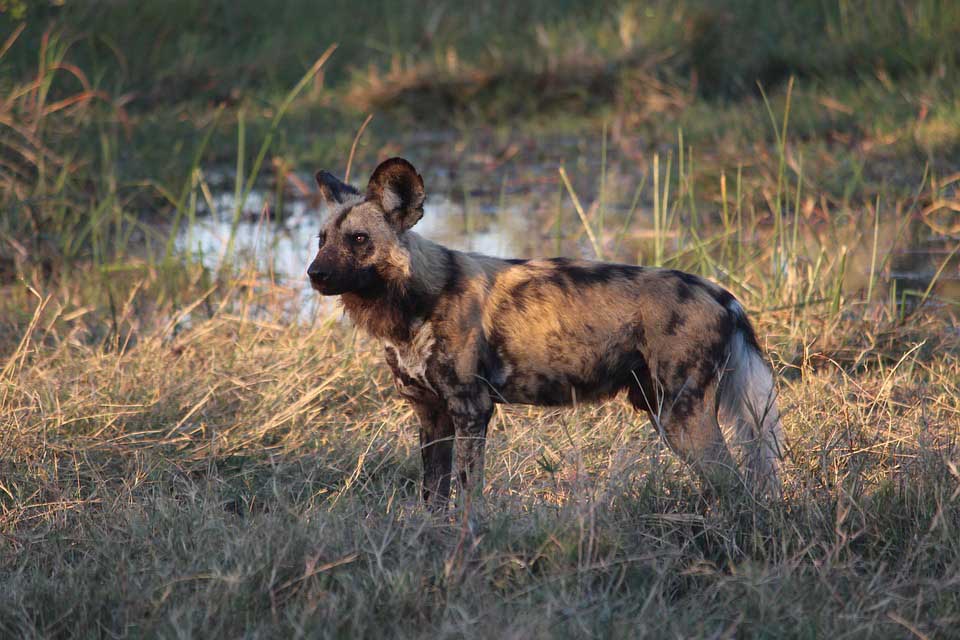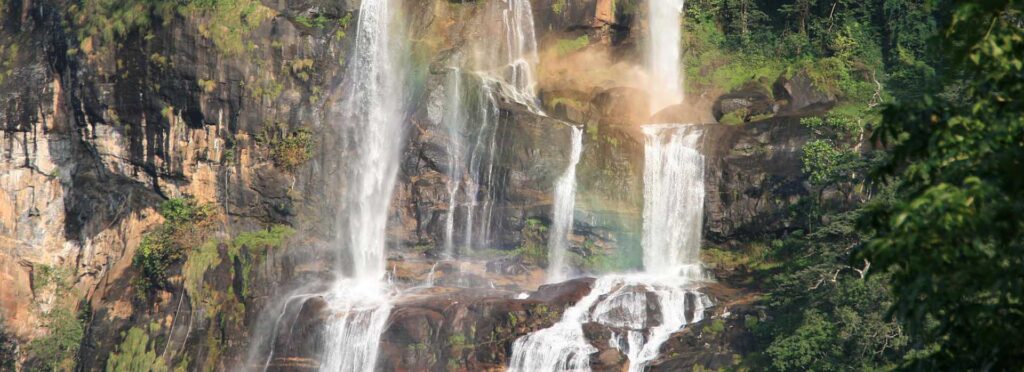Kitulo National Park
The Gods’ Garden
Kitulo National Park
The history of the park goes back to 1870, when Fredrick Elton, an Explorer visited the area. In the 1960s a large area was taken by United Nations Food and Agriculture Organization for Wheat and Sheep Schemes. Since neither wheat nor sheep thrived in the area, in 1972 the area was turned into a dairy farm, which remains active to date.
As a result of concerns from conservation bodies and various stakeholders, part of the farm, Livingstone, and Nhumbe Forest Reserves were declared as Kitulo National Park on the 16th of September 2005.
Info About Kitulo National Park
- Area: 412.9 sq. km/159.4 sq. mi
- Established: 2005
- Located: Njombe Region, Tanzania
- Distance & Drive time: From Mbeya city-Isyonje- Kitulo is 70 km/43mi: Mbeya city-Chimala-Kitulo is 103km/64mi: Njombe town-Ikonda-makete-Kitulo 165km/102mi
Climate
The climate is influenced by altitude, Lake Nyasa, and is largely temperate. The maximum daily temperature varies from 14.5°c to 18°c and the minimum ambient temperature ranges from 7°c to 8°c between December and April and can go as low as 0.5˚c from June to August, during this period frost occurs. The average annual rainfall is 1600mm ranging from 1500 – 1700mm. The rain season begins from October to May.
How to get there
The park can be accessed from Mbeya town, which is about 110km/68mi away via Chimala road and 70km/43mi via Isyonje road. It is about 90km/55mi from Songwe Airport. The park can only be reached by road.
By Air: Through Songwe Airport; 90km/55mi via Isyonje and 125km/77mi via Chimala small town to Kitulo.
Songwe airport is an airport in the southern highlands region of Tanzania serving the city of Mbeya and the nearby regions. It is able to accommodate commercial jet traffic.
Park Attractions inside the Park
These are places of interest inside the park, where you can visit, typically for their inherent or exhibited natural or cultural value, historical significance, natural or built beauty, offering leisure, adventure, and amusement.
The Park has vast expanses of rolling upland grassland, rounded hills stretching away to the horizon, waterfalls, rivers, and a crater lakes.
Kitulo Plateau
The plateau is characterized by three main vegetation types:
- Well-drained grassland on volcanic soils with species like Aster transgenesis, Kniphofia Grantii, and others.
- Seasonally or permanently in updated bogs with species such as Lobelia and Gladiolus.
- Rocky ridges and associated talus slopes on soil derived from metamorphic rocks with species like Moraea Callista and Romulea companuloides.
Flowers
The park is one of the great flower gardens in the world with over 40 species of ground orchids alone. Flowers come out in their thousands making unparalleled carpets of color, especially from late November to April.
Mount Livingstone Forest
Some of the tree species in the forest are Hagenia abyssinica, Ocotea usambarensis, Juniperus procera, and Khaya anthoceca. The forest is also characterized by mountain Bamboo, (Sinarundinaria Alpina). Kitulo is rich in flora species with 350 species of high plants recorded, including 45 species of terrestrial Orchids, of which 31 species are endemic to Tanzania, 16 are endemic to Kitulo and Poroto Mountain sand at least 3 species are endemic to Kitulo national park. Two species are only known to be in Kitulo and adjoining forests. The abundance of plants in the wet season has been described as the greatest flora marvel of the World.
Birds
Kitulo National Park is an important bird area (IBA) with wintering site for various bird species from South Africa and Europe. Some species from North Africa, Abdim’s stock in particular use Kitulo as a wintering area. The plateau is also home to breeding colonies of Blue swallow and Denham’s bustard. Other endemic bird species include Lesser kestrel, Pallid Harrier, Cisticola njombe, Kipengere Seedeater, and Uhehe fiscal. A number of waterbirds can be found at Dhambwe Crater Lake. These are Yellow-billed duck, White-faced whistling ducks, Common teal, Open-billed stocks, and Red-knobbed coot.
Nhumbe Valley
This is often referred to as the jewel of the Park, where small streams emerge from the grassy hillsides sometimes cascading down into little waterfalls, thus forming the head waterfall for Nhumbe river, one of the main tributaries of the Great Ruaha River. The gap in the valley is occupied by Juniper forest, one of the most extensive in East Africa. The tower to 50 m high and is indeed the tallest juniper in the world.
Nhumbe Waterfall
Its height is approximately 100 meters. The waterfall is 20 km from Mwakipembo main gate and takes one hour to walk down the waterfall and up to the picnic site. You can cool your body there and take brilliant photos.
Mwakipembo Waterfall
It is located along the road to Nhumbe valley 4 km from mwakipembo main gate, its height is 8 meters. The area is characterized by orchid flowers, everlasting flowers, Erica plants, and Clematopsis uhehensis.
Accommodation
The Park provides a variety of accommodations that are found inside and outside the park. Beautiful public and special camping grounds are available inside the park.
Mwakipembo Public Campsite
Mwakipembo Public Campsite with a campfire, flush toilet, shower, and camping ground. Booking is not required.
Maua Special Campsite
Maua Special campsite is in its natural environment reserved to maintain exclusivity for users. Prior booking is required.
Accommodation Outside the Park
Good guests and Lodges at Matamba small town (Zebra guest house, God’s Garden Hotel, Eden Motel, Mama Izengo guest, Mtanganyika, and Rena Blumen Lodge) provide good accommodation to visitors. However, three Star Hotels are found in nearby Mbeya City.
Activities
The park is endowed with various tourism activities that visitors can do during their visit. The activities include; Hiking, Nature Walking Safaris (Short Walking Safaris (SWS)), Long Walking Safaris (LWS), Picnicking, Bird Viewing, Camping, Filming, and Cycling (MB).
Take one of the many walking trails that we have customized so that you can explore our park and nature along Nhumbe forest with good habitat for over 50-meter trees, black and white colobus monkeys, and waterfalls. On mount Livingstone ranges and grassland plain there are very interesting trails for flowers, hikers, and forest lovers.
- Nhumbe walking trail (1 – 3hrs)
- Matamba ridge (4 – 10hrs walk)
- Kipunji hiking trail takes (8 -12hrs)
- Kilasi hiking trail takes (3 – 6hrs)
- A bamboo hiking trail takes (3 – 6hrs)
- Ikubo hiking trail takes (3 – 6hrs)
Also, there is a Trail from Ipelele to Matema Beach- Lake Nyasa that takes you a couple of days.
Game viewing
Explore game drive along Matamba ridge, montane grassland, bamboo forest, and Mt. Livingstone trees, waterfalls, and around the natural flower garden. Four-wheel (4X4) drive vehicles are recommended.
Nhumbe trail (Short walking safari)
The safari starts from Nhumbe picnic site, then descends to the waterfall base through very steep built steps, and ascends back to the picnic site, taking two hours (2hrs) walking.
Matamba Ridge (Long walking safari)
The safari starts from mwakipembo campsite, then hikes to matamba ridge and descends to mlivili cave, it takes six hours (6hrs) walking. Walking to matamba ridge route gives a nice scenery vision of grassland plains and horizons.





